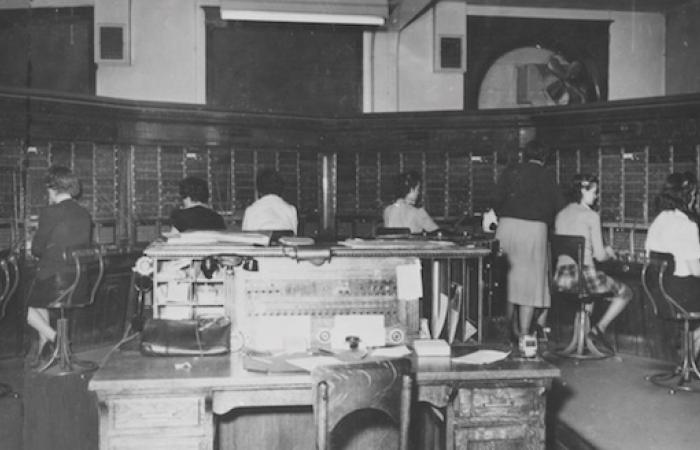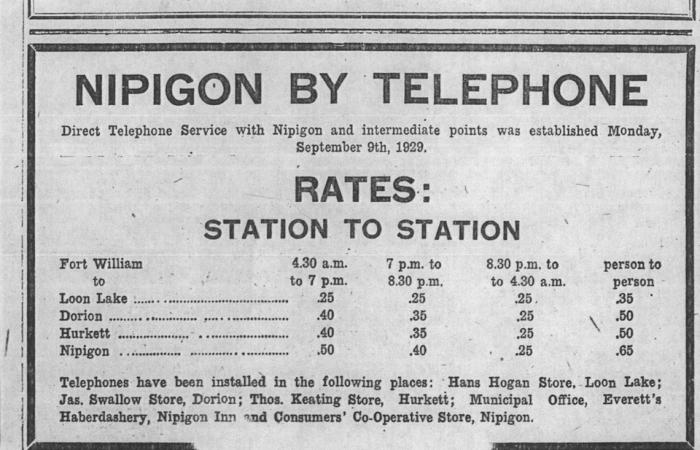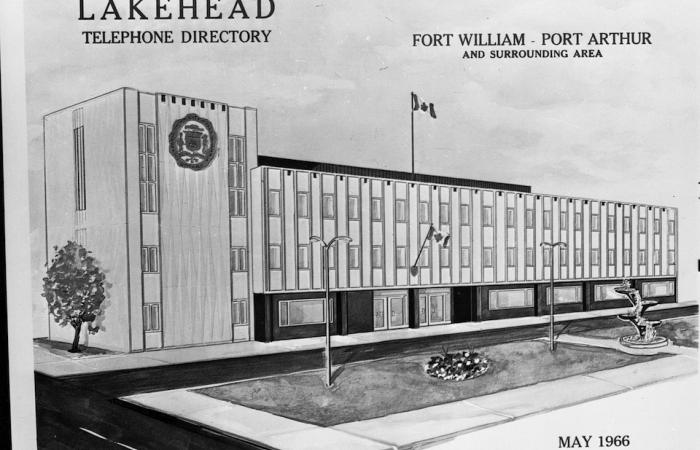These were the first words spoken through the telephone by Alexander Graham Bell to his assistant Thomas Watson March 10, 1876. Bell and Watson were working on developing the telephone in Bell’s apartment in Boston. Bell was in one room and Watson was in another. When Bell spilled battery acid on himself and called for Watson to help him. Watson heard Bell’s summons through the telephone, jumped to his feet and ran to Bell exclaiming , “I heard every word distinctly!” In the excitement, Bell forgot about the spilled acid. The dits and dahs of Morse code were familiar to people then, but Bell’s dream was to transmit the human voice. He called it the “talking wire.” On that day in March, he achieved his goal. Bell immediately applied for a patent for his telephone.
News of Bell’s success spread quickly. Less than one year later, in June 1877, experimental telephonic communication was carried out between the Landing at Park Ave. and Cumberland St. and the Town Plot six miles away. In that, the Lakehead acquired the distinction of being one of the first communities in the world to hold a telephone conversation. The call was between a Mr. Henderson, Alexander Graham Bell’s brother-in-law, and W.P. Cooke of Port Arthur.
Six years later, James Conmee applied to the Town of Port Arthur for the right to construct a telephone system that would connect Port Arthur and Fort William. On May 23, 1884, Port Arthur city council granted Conmee exclusive rights to install the system and the Port Arthur Telephone Company was born. When the Bell Telephone Company of Canada, which had been incorporated four years earlier, caught wind of this it sued claiming it had sole rights to construct the telephone system across Canada. And the fight began. While the court battle raged on, both companies were busy expanding operations and wooing customers. But Port Arthur Telephone had an advantage. It could undercut Bell since it was a municipal utility and didn’t have to pay taxes whereas Bell, being a private corporation, did. When the dust finally settled August 10, 1909, the two companies reached an amicable agreement. Port Arthur Telephone bought Bell’s equipment for $3,500. It would handle local calls while Bell Canada would manage long distance. Bell handled both local and long distance calls in Fort William until 1910 when Fort William decided it could do a better job of handling local calls than Bell. It formed the Fort William Telephone Company, bought out Bell’s equipment for $12,500 and, like Port Arthur, Bell would manage long distance.
“Hello girls” played a vital role
Originally, phone calls were made by picking up the receiver, rattle the hook or crank the handle, an operator at the main switchboard asked you for the number you wanted to call and then she made the connection. During the years of World War II, the women who operated the switchboard, affectionately called “hello girls”, played a vital role in keeping the Lakehead connected with the world. In Fort William alone, these ladies maintained the switchboard 24/7 handling 43,000 calls daily.
Operator-assisted manual dialing ended in 1949 to be replaced by direct dialing. Now, when you put the phone receiver to your ear, you would hear a dial tone instead of the familiar voice asking “Number please?” At 11:53 PM on April 25 the switchover was made. As the momentous day approached, the newspapers in Port Arthur and Fort William were awash with articles explaining how a dial telephone worked and the correct way to use one. Discussions too abounded wondering “Who would make the first call? And to whom?” As it turned out, that honour fell to Port Arthur Mayor Fred Robinson and Fort William Mayor Hubert Badanai. After that, phone traffic rapidly increased taxing the systems of both of the twin city’s.
On January 1, 1970, Port Arthur and Fort William amalgamated to form Thunder Bay, and each city’s municipally-owned telephone system joined to become Thunder Bay Telephone. In an effort to deal with its overtaxed telephone system, Thunder Bay Telephone unveiled a $37,637,000 plan in November 1973 to upgrade its entire phone network to electronic switching equipment by 1982. This would allow for much faster completion of calling, and make way for options like futuristic picture calls. All of Thunder Bay would then have single party line service. One and two party line service would be extended to five miles outside city limits. Two or four party lines would be extended to five to ten miles with multiparty lines beyond that.
Could Thunder Bay Telephone keep up?
Along came the 1980s, and despite the ongoing modernization of its phone system, the question was raised if an independent telephone company like Thunder Bay Telephone could keep up with the rapidly changing technology? Would Thunder Bay be better served by the corporate strength of Bell Canada. The question was put to council in 1985, and a study ensued. A year later, the report stated that selling off Thunder Bay Telephone could net over $80M for the City. However, it would see rates to residential subscribers rise $2.25, and business by $10.10. Also, the City would lose the $5.6M its phone utility added annually to its coffers. Council decided not to sell.
Northern Ontario’s largest 4G network
The year of 2004 opened the next chapter in Thunder Bay Telephone’s history. It was renamed Tbaytel and became a telecommunications company equipped to meet the technology of today. Over its 134 year history, Tbaytel has survived a fire, economic downturn, two World Wars and a dispute over whether it could make it in the rapidly changing world of technology. It has shown that it can not only survive but prosper as well. Tbaytel is now Northern Ontario’s largest 4G network paying the City of Thunder Bay a dividend of $17M annually. It serves a 300,000 km2 area from west of Sault Ste Marie to the Manitoba border, and from Red Lake south to the Canada/US border which makes it the largest independently-owned telecommunications provider in Canada. Today, Tbaytel is more than telephones. It is at the forefront in the evolution of the telecommunications industry providing voice, data, wireless, internet, digital TV and security.
From its founding, Tbaytel has always adhered to its mission to work with its customers so the people in its “neighbourhood” could make better connections with the world. Although it serves only a small part of the entire Canadian telecommunications market, time has certainly shown Tbaytel to be the little engine that could.







